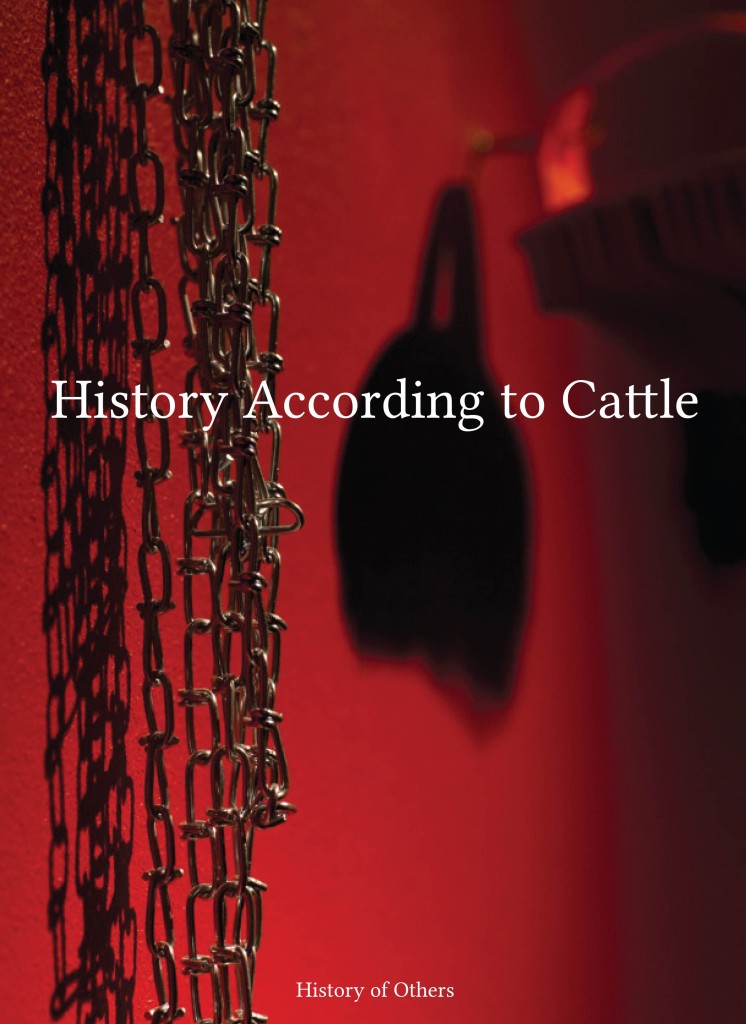Download Poster for History of Cattle Timeline HERE.
History According to Cattle is an expanded account of the acclaimed art and research project History of Other’s first major installment, The Museum of the History of Cattle (2013). The exhibition presents a large-scale ethnographic museum of world history as seen from the perspective of cattle, one of the most important companion species of humans. Thus, The Museum of the History of Cattle is the first museum to exhibit the cultural history of a non-human species. In the exhibit, the connections of animal rights issues with violations of human rights become visible while the situations of indigenous cattle populations, the development of genetics, and industrialization are imagined through the eyes of this silent, ever present companion. Both tragic and humorous, The Museum of the History of Cattle portrays humans as a species mesmerized by its own image.
The book-catalog includes a full presentation of the research and visual material of the exhibition, with contextualizing essays by art historian Anne Aurasmaa, philosopher Elisa Aaltola, theorist Kirs Forkasiewizc, and researcher-curator Radhika Subramaniam. Drawing from critical animal studies, animal philosophy, art theory and the lived companionship of humans and cattle, the publication provides a fresh insight into the possibilities of creative imagination, and into the ethical encountering of the species-other in our society.
The History of Others is an art and research project by visual artist Terike Haapoja and writer Laura Gustafsson, which aims to bring into light alternative cultural histories of those whose stories are yet to be told. The focus of the project is the exploration of the lives and experiences of non-human animals and the investigation of their cultural history, in order to understand how the lifeworlds of individuals have changed over time and how historical events may have been interpreted or perceived by non-human beings. History of Others creates immersive experiences that enable the human mind to approach non-human realities. The research is conducted through interviews and collaborations with professionals from different fields of science, research and art, and the research is therefore more closely linked to the fields of anthropology or ethnographic studies than it is to biology, with complications arising around how to exhibit or make accessible the knowledge and meanings of other cultures. The goal is to create new forms through which to experience knowledge — forms, that would be more open to the subjective, non-linguistic experience of the non-human world. The The History of Others project materializes in exhibitions, publications, performances, interventions and seminars, and is structured as a continuous process, leading towards a large-scale, encyclopedic installation exhibition, The Museum of the History of Others. The Museum of the History of Cattle is the first part of the ongoing project. The second part, a lecture performance The Trial which investigates the legal personhood of non-human animals, premiered at the international theatre festival Baltic Circle in Helsinki 2014. The upcoming third part of the project will be The Museum of the History of Non-Humanity, which focuses on dehumanisation and its effects on both humans and animals.

